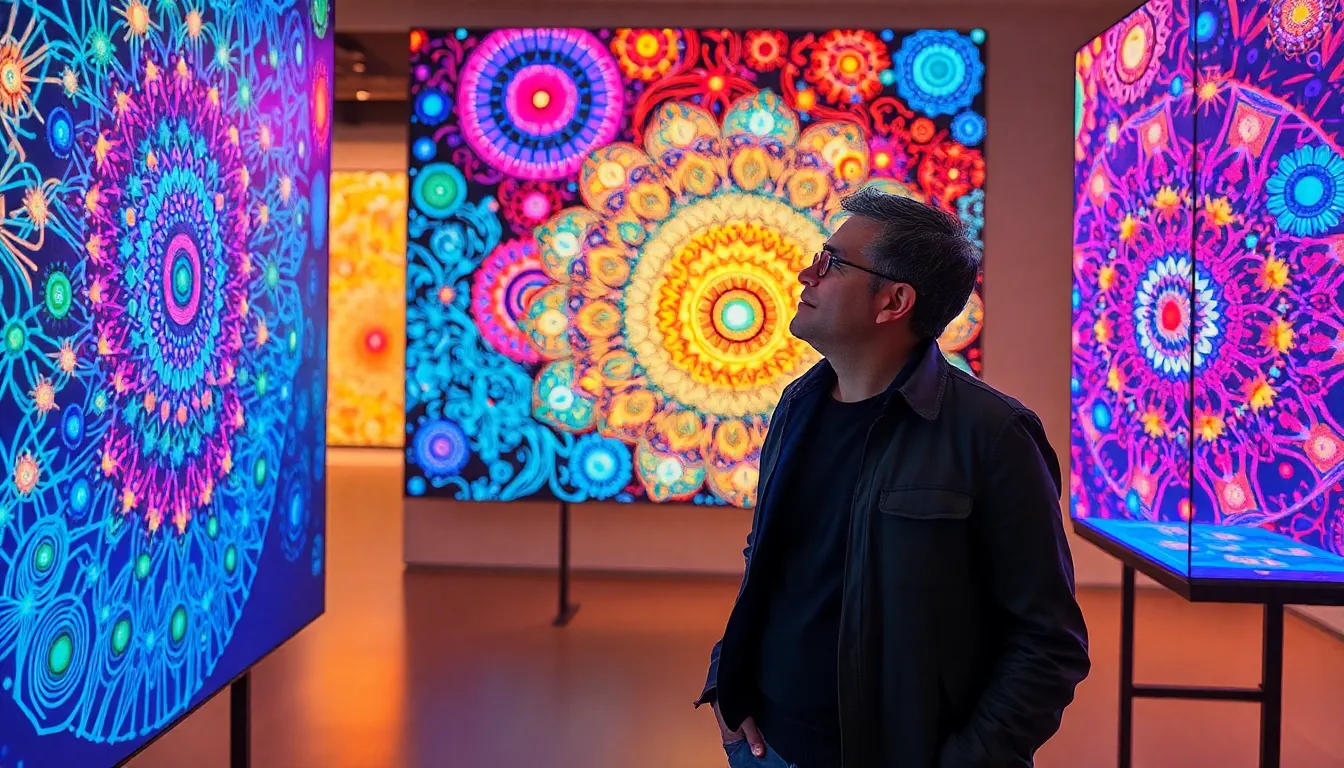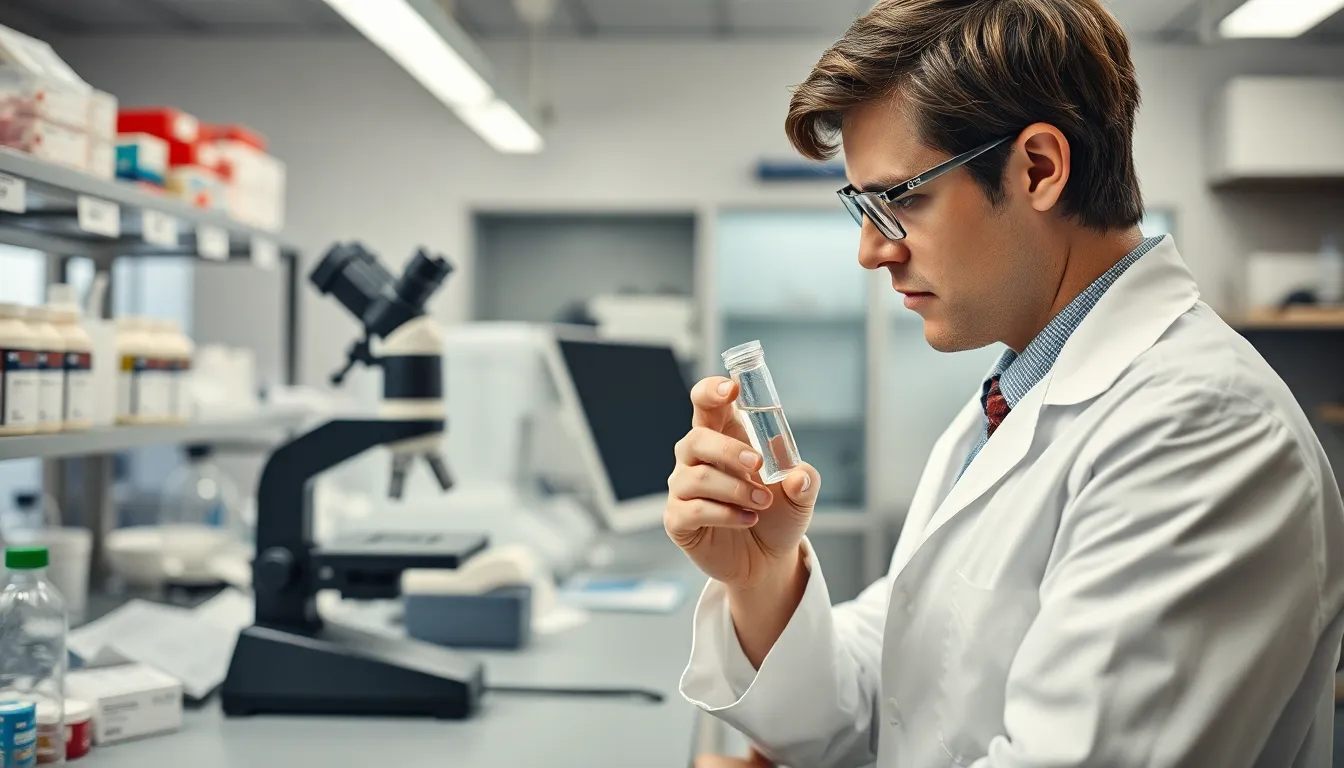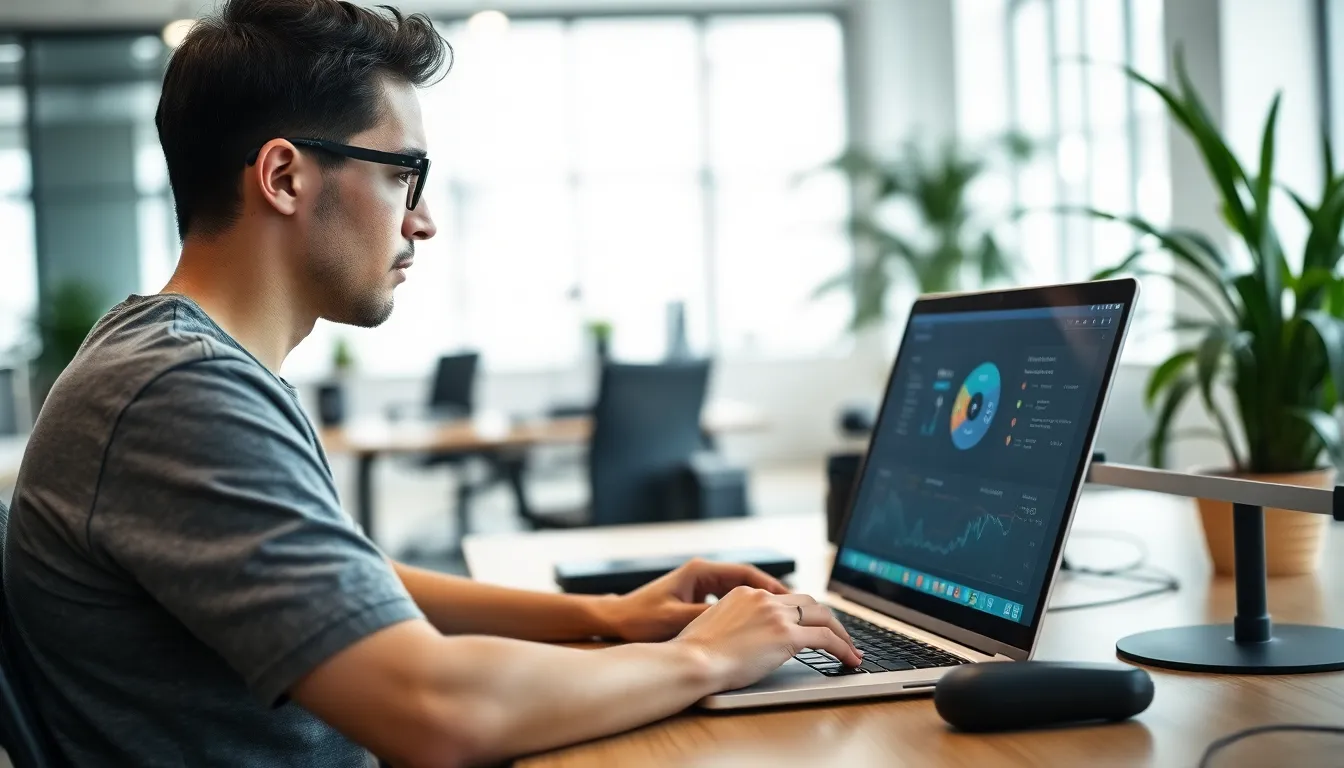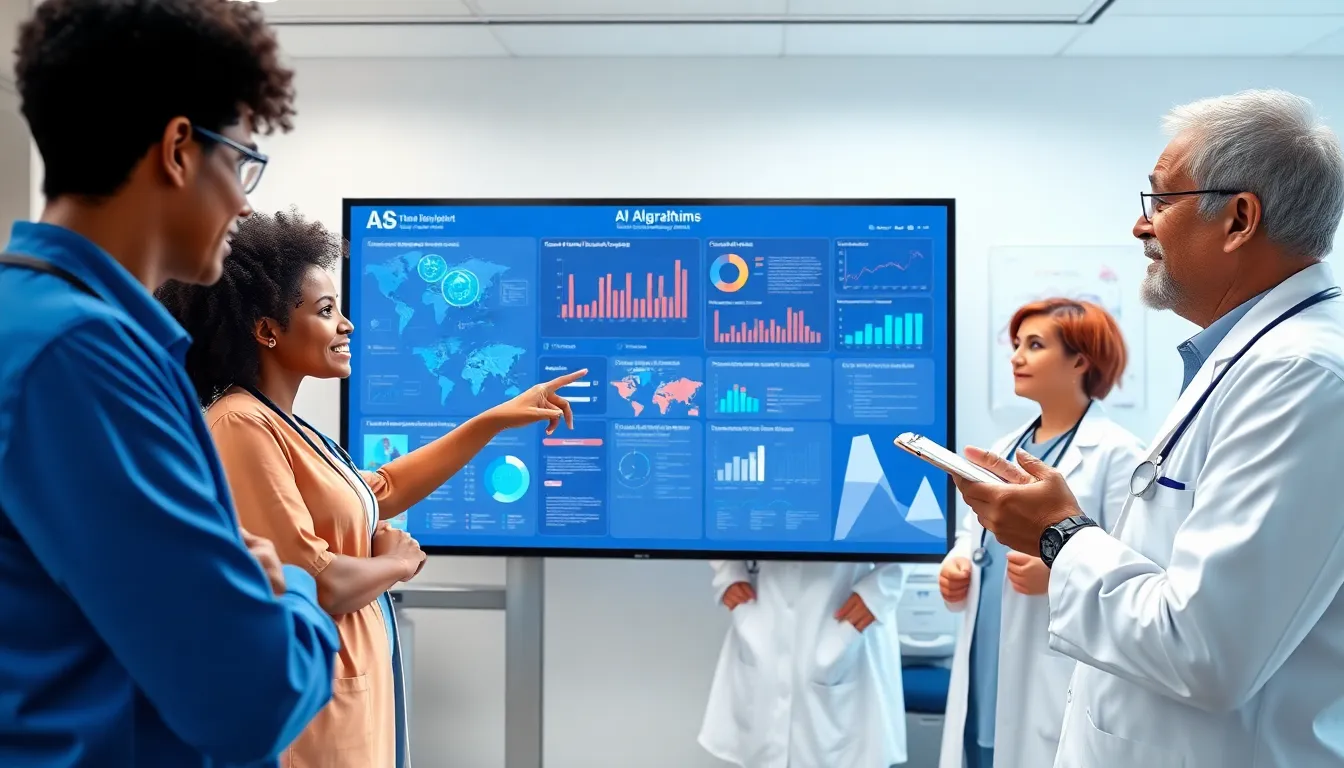In a world where creativity meets technology, AI-generated art is stealing the spotlight. Imagine a digital Picasso, tirelessly creating masterpieces while you sip your coffee. It’s not just a quirky trend; it’s a revolution that’s reshaping how we think about art and creativity.
Gone are the days when artists had to wrestle with paintbrushes and canvases. Now, algorithms are the new brushstrokes, producing stunning visuals that can leave anyone in awe. But is it art or just a clever trick? Dive into the fascinating realm of AI-generated art, where the lines between human creativity and machine learning blur, and discover why this digital renaissance might just be the future of artistic expression.
Table of Contents
ToggleUnderstanding AI-Generated Art
AI-generated art signifies a groundbreaking shift in creative practices. This innovative form of art uses algorithms and machine learning to produce visuals, challenging traditional artistic norms.
Definition and Concept
AI-generated art describes works created through artificial intelligence software. It encompasses various forms, including paintings, music, and literature, where machines analyze vast data sets to generate unique pieces. Artists often collaborate with AI tools, exploring new creative avenues and enhancing their workflows. This collaboration raises significant questions about authorship and originality in the artistic process. Consequently, discussions about the definition of art and creativity intensify as technology advances.
Historical Background
Emerging in the late 20th century, AI-generated art has roots in computer graphics and early algorithmic art. In the 1960s, artists like Frieder Nake explored the potential of computers for creative expression. Development continued, leading to notable milestones such as Harold Cohen’s AARON, which created original artworks. The 21st century witnessed an explosion of interest, driven by advances in deep learning and neural networks. Artists and technologists began experimenting with AI to create increasingly sophisticated works, influencing contemporary art practices significantly.
Types of AI-Generated Art

AI-generated art encompasses various forms, showcasing the versatility of technology in creative expressions. Both visual arts and music exemplify this innovative frontier.
Visual Arts
Visual arts represent a significant category of AI-generated creations. Algorithms analyze vast data sets of images to create unique works. Tools like GANs (Generative Adversarial Networks) produce paintings that mimic famous styles or create entirely new aesthetics. Artists like Refik Anadol employ AI to generate mesmerizing installations that blend art and technology. Additionally, software such as DeepArt transforms photographs into stylized masterpieces. The popularity of AI art generation has sparked collaborations between artists and technologists. Overall, visual arts highlight the potential of AI to push boundaries and redefine artistic practices.
Music and Sound
Music and sound also feature prominently in AI-generated art. AI algorithms create original compositions by analyzing existing music styles and structures. Tools like OpenAI’s MuseNet produce intricate melodies across various genres, demonstrating complexity and originality. Collaborations between musicians and AI amplify the creative process, enabling unique soundscapes. Moreover, platforms like AIVA offer composers AI-generated score options for films and games. AI-generated sound art challenges traditional notions of music composition and encourages experimentation. Overall, the fusion of AI in music showcases its role in transforming auditory experiences.
Tools and Technologies Behind AI-Generated Art
The tools and technologies powering AI-generated art play a crucial role in shaping this innovative field. Understanding these components helps illustrate the complexities of algorithmic creativity.
Algorithms and Machine Learning
Algorithms and machine learning form the backbone of AI-generated art. Generative Adversarial Networks (GANs) utilize two neural networks that compete against each other to generate new images. These models analyze extensive datasets, identifying patterns and styles to create unique visuals. Deep learning enhances the versatility of AI, enabling it to produce works that often mimic traditional techniques. Algorithmic processes also allow for real-time adjustments based on user input, offering artists new ways to interact with their creations. Notably, advancements in convolutional neural networks (CNNs) have revolutionized image synthesis and style transfer, further pushing the boundaries of artistic expression.
Popular Software and Platforms
Several software programs and platforms enable the creation of AI-generated art. Tools like DeepArt and Artbreeder provide user-friendly interfaces, allowing artists to produce stylish images effortlessly. Adobe’s Sensei integrates AI features into its products, enhancing creative workflows. RunwayML serves as a platform for artists to experiment with various AI tools, promoting collaboration. Additionally, OpenAI’s DALL-E generates images from textual descriptions, showcasing the power of combining language processing and visual generation. These platforms demonstrate accessibility and versatility, making AI art creation available to both hobbyists and professionals alike.
Applications of AI-Generated Art
AI-generated art finds diverse applications across various sectors, blending creativity with technology. This integration reshapes artistic processes and expands creative possibilities.
Creative Industries
Creative industries leverage AI-generated art to enhance branding, advertising, and entertainment. Designers often utilize AI tools to produce unique visuals that capture consumer attention. Film and gaming industries increasingly incorporate AI-generated assets to create lifelike characters and vibrant environments. Artists collaborate with AI to push their boundaries, resulting in innovative exhibitions that attract broader audiences. Music producers also incorporate algorithmic compositions, enhancing soundtracks and transforming the listening experience. These collaborations foster a dynamic relationship between human creativity and artificial intelligence, prompting a new era of artistic expression.
Commercial Use
In commercial spaces, AI-generated art plays a crucial role in marketing and product design. Companies utilize AI to generate customized designs that cater to specific demographics. Brand identity benefits from unique visual content, providing a competitive edge in crowded markets. Retailers adopt AI for personalized advertising, creating tailored experiences for consumers. Interior designers also integrate AI-generated art in spaces to evoke desired atmospheres for customers. Every application demonstrates the adaptability of AI, showcasing its potential to redefine artistic contributions across industries.
Ethical Considerations
Ethical considerations surrounding AI-generated art involve complex issues of ownership and the impact on human creators.
Copyright Issues
Copyright issues raise significant questions about the legal status of AI-generated art. Ownership of such works often lies in a gray area, as the creator may be an algorithm rather than an individual artist. Current copyright laws generally protect works created by humans, leaving AI-generated pieces vulnerable to disputes. Artists whose styles influence AI algorithms may find their work used without permission, complicating the relationship between traditional and AI art. As AI technology continues to evolve, the need for updated legislation becomes crucial to address these emerging challenges effectively.
Impact on Artists and Creatives
AI-generated art significantly impacts artists and creatives, influencing both opportunities and challenges. Some view AI as a tool to enhance creativity, offering new ways to express ideas and generate unique pieces. Others worry that AI may devalue human artistry, as machines produce art at scale and speed. The collaboration between artists and AI also raises concerns about the authenticity of creative expression. Emerging technologies could shift the focus to concept and vision rather than technical skills alone. Adapting to this new landscape may be vital for artists seeking to maintain relevance in an increasingly automated industry.
Conclusion
AI-generated art is reshaping the landscape of creativity and challenging traditional notions of artistry. As technology continues to evolve artists are discovering new ways to collaborate with AI tools that enhance their creative processes. While this innovation raises questions about authorship and originality it also opens doors for unique expressions across various mediums.
The blending of human creativity with artificial intelligence fosters a dynamic relationship that pushes the boundaries of artistic expression. As the art world adapts to these changes it’s clear that AI-generated art is not just a passing trend but a significant development that will influence the future of creativity across industries. Embracing this evolution may lead to richer artistic experiences and fresh perspectives on what art can be.





